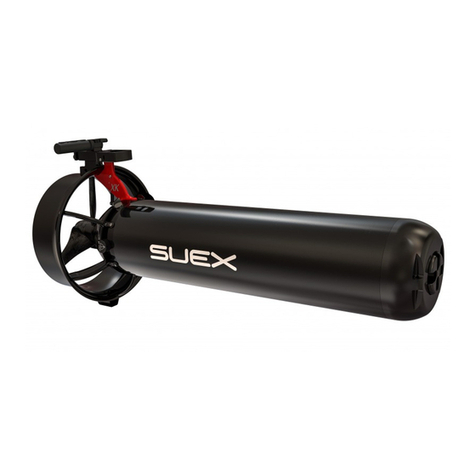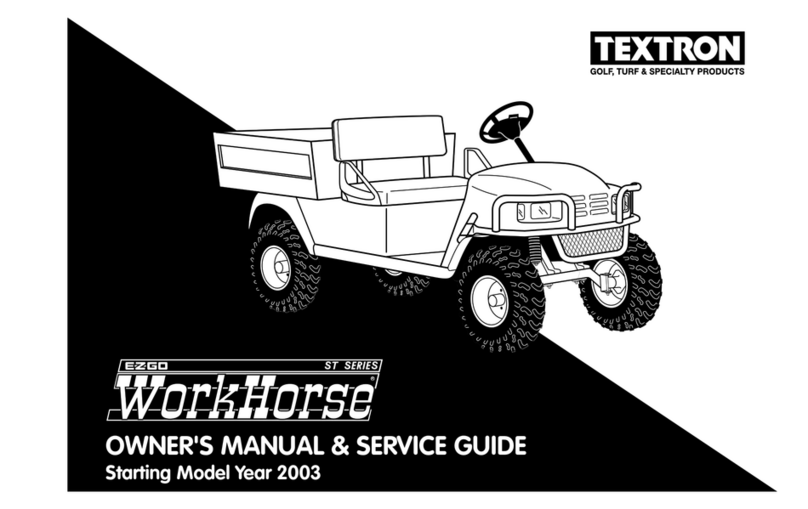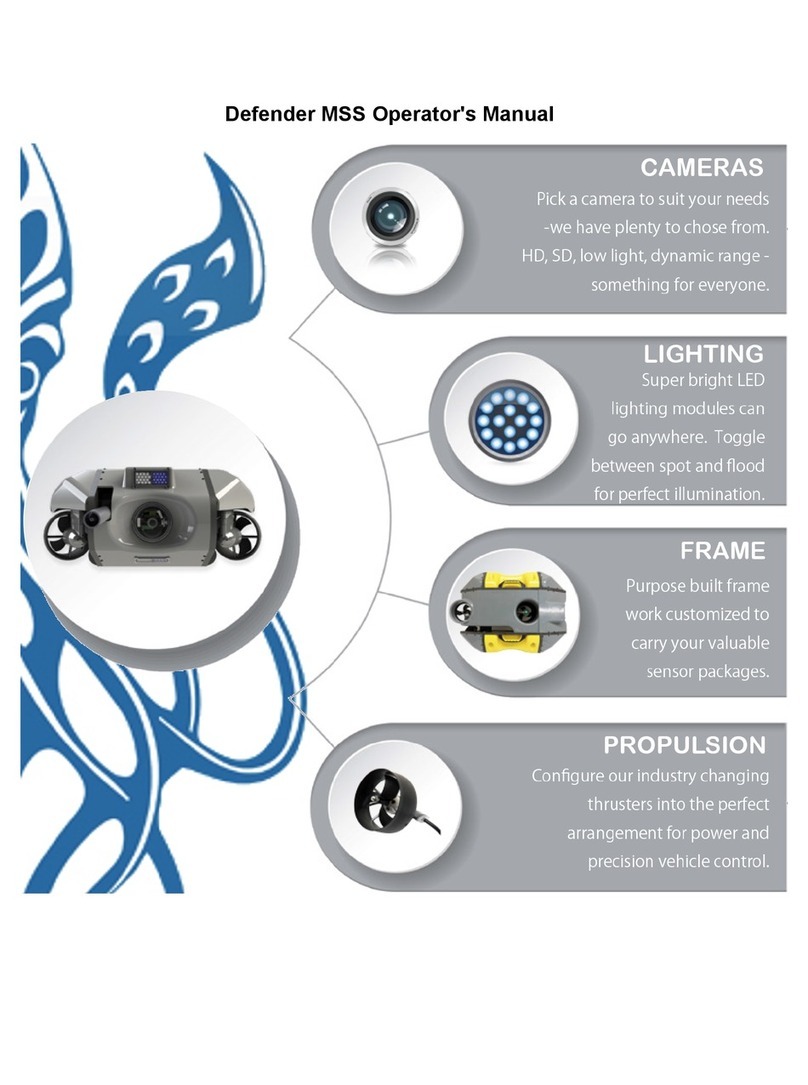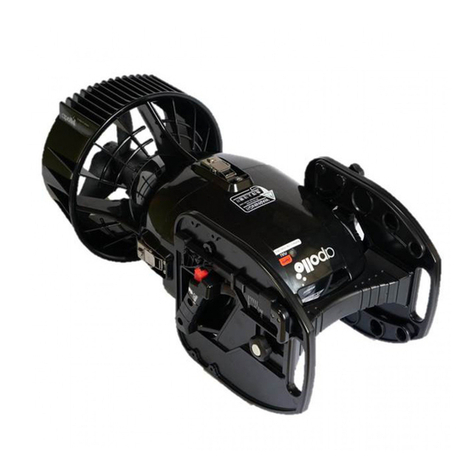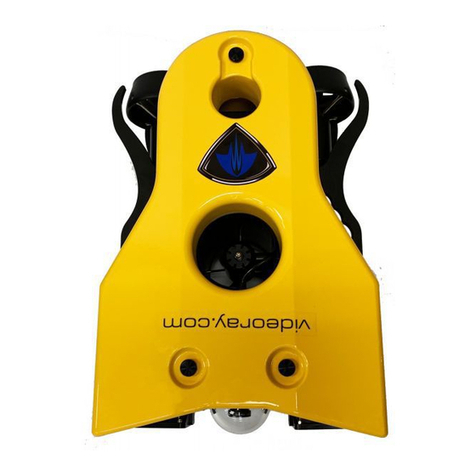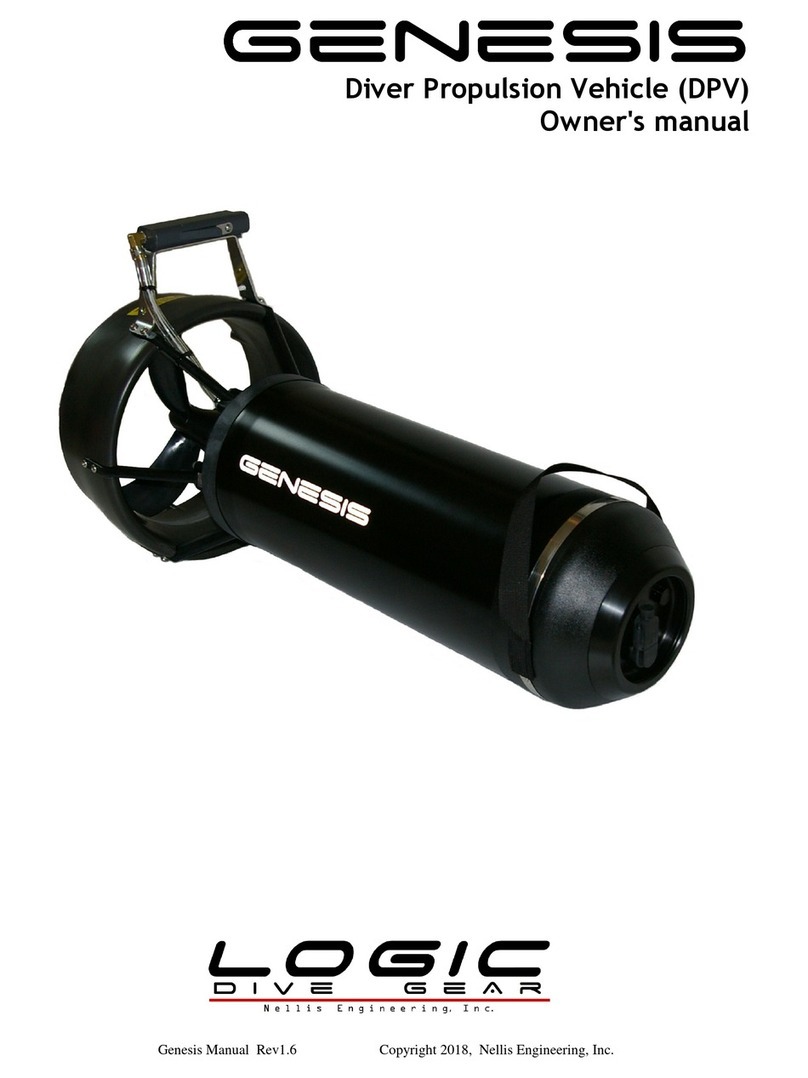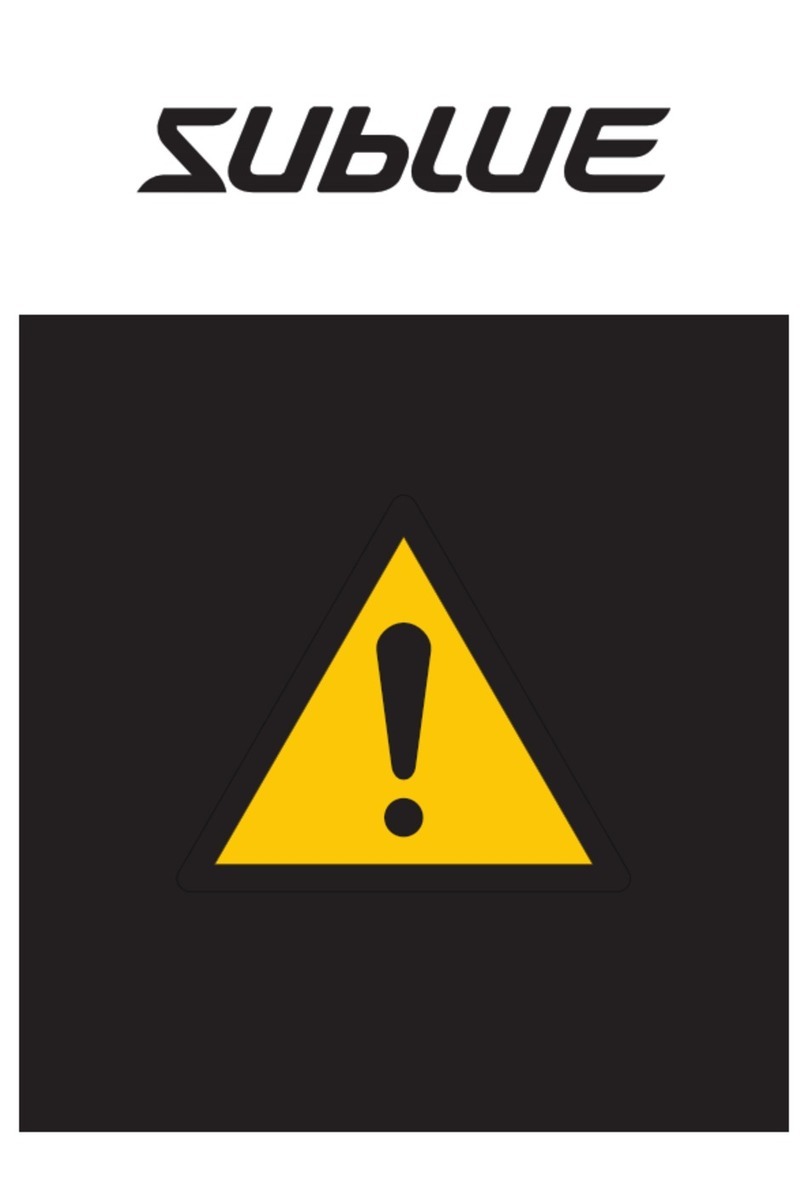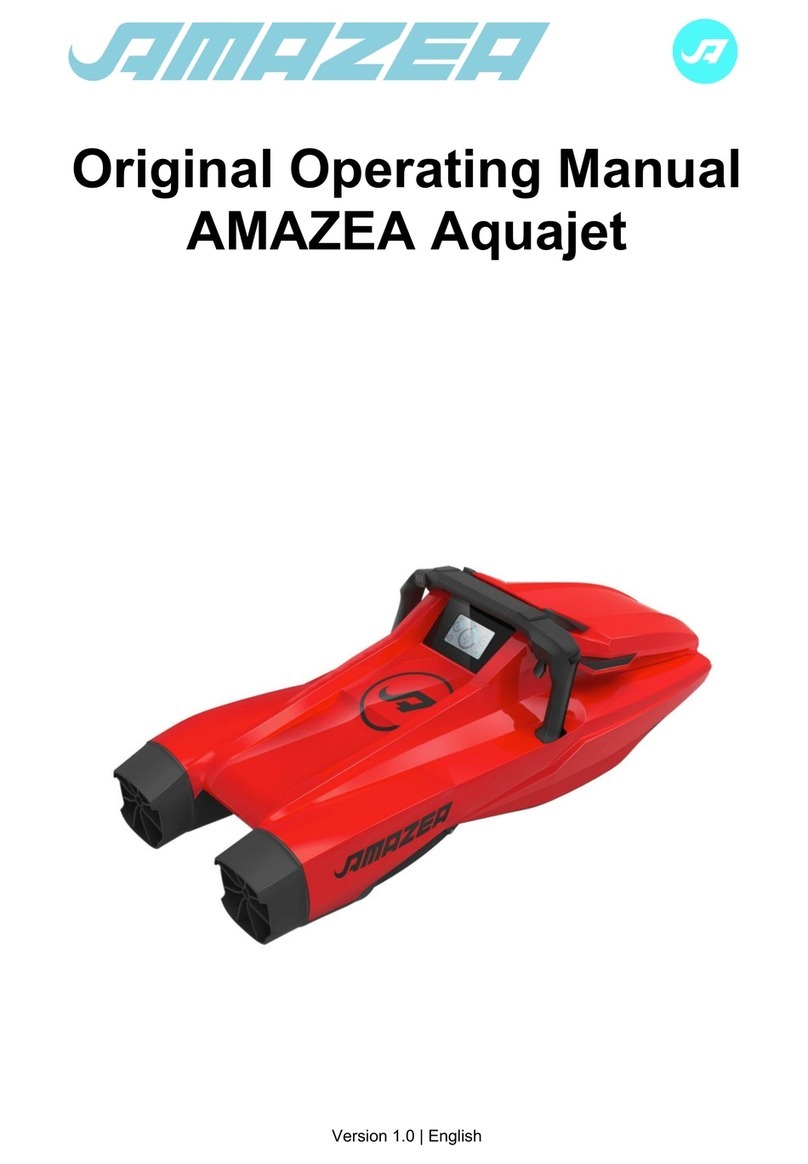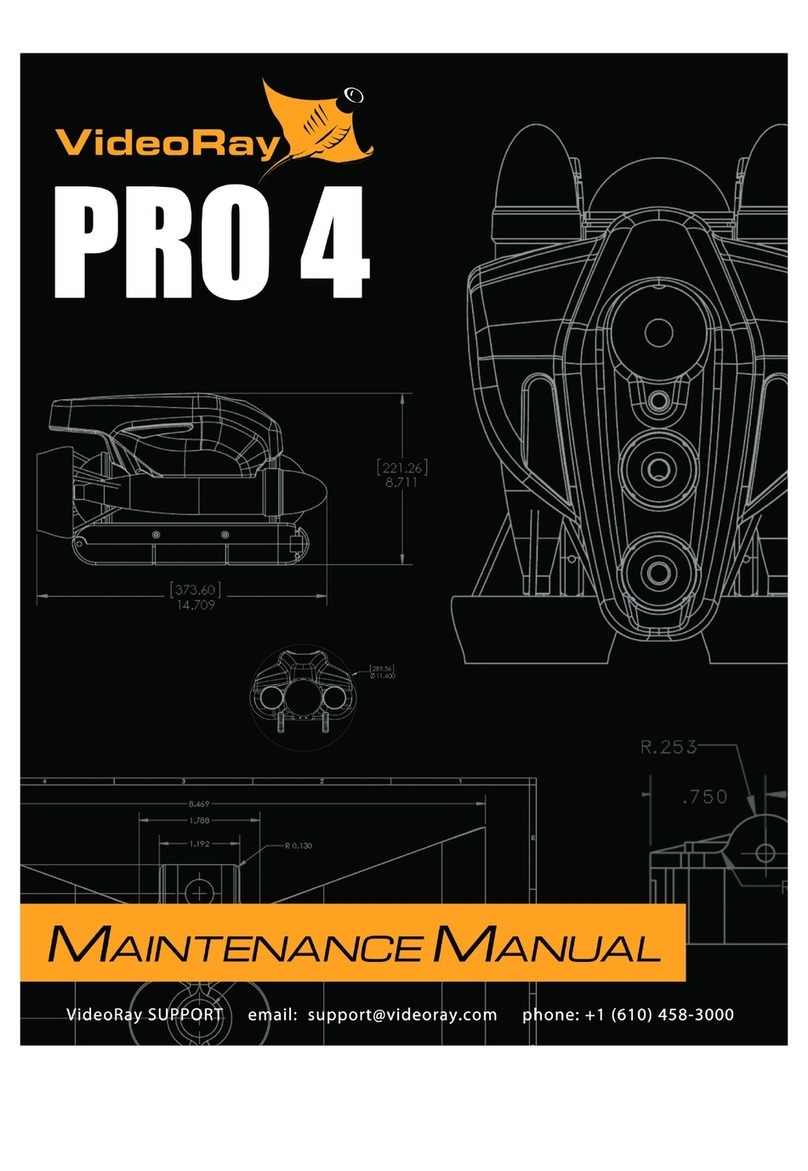SUBMERGE Scooters Magnus DPV Firmware update

Assembly directions for Magnus DPV
Updated Sept 2012
For this assembly, be sure you have the Motor section, the battery pack, 4 threaded rods and
12 or 16 nuts. Nuts may be pre-set position. You ill also require 2x 7/16” tools to enable the
tightening of 2 x 7/16” nuts at the same time.

Step 1:
Install the 4 threaded rods into the battery pack, the loctited nut end first. Finger tighten only.

Step 2:
With the motor section sitting propellers do n and flat on the ground, carefully install the
battery pack onto the motor, through the 4 available holes. Follo the alignment directions
marked on the battery pack. The battery pack has a preferred orientation hich ill
provide optimal trim.
The mounting threaded rods may be pre-set, but it is MOST IMPORTANT that the battery
pack is not installed too far to ards the nose of the scooter. The maximum distance is
450mm as measured from the point indicated by this picture belo and the top of the battery
pack:
CAUTION: Measure at 4 positions around the battery pack to ensure the pack is
installed perfectly in line ith the motor. Failure may result in a flooded scooter.

Step 3:
Install the last 4 nuts onto the 4 threaded rods. Finger tighten, until all 4 are secure. Re-
measure if necessary. Then, tighten using 2 tools, either side of the motor component. A 7/16”
ring type rench is useful.
MAKE SURE YOU ARE NOT TIGHTENING THE ROD INTO THE BATTERY PACK. The
threaded rod should not rotate hen tightening these nuts. Doing so may damage plastic
threads and compromise battery pack integrity.
Tighten snugly, but be a are the threaded rods are aluminum hich is much softer than steel.
Over tightening ill strip the threads.
Check these nuts are secure every time before the scooter hull is installed pre-dive.
The purpose of the threaded rods, is to allo for adjustment of the battery pack in order to
adjust the trim of the scooter. Using these measurements, the scooter ill be almost perfectly
balanced in fresh ater.

If you need to adjust the trim of the scooter so than the nose is higher, move the battery pack
closer to the motor in small (5mm/1/4') increments, until the scooter is to your desired trim.
Do not place any loose trim eights or other loose object in the tail end of the scooter. Doing
so may cause an electrical failure, or mechanical motor failure if any object makes it's ay
into the motor ( hich is not sealed).
TRIMMING FOR SALT WATER:
The scooter is set up for fresh ater from the factory. (you ill have to make minor
adjustments to trim the scooter perfectly).
For salt ater diving, you ill need to add 1 to 1.75 pounds depending on the scooter and
your preference. We recommend a slightly positive scooter on the surface. Horizontal or
preferably ith 5% nose up angle.
There are 2 ays to distribute the salt ater trim eight.
First is adding approx ½ of the trim eight to the pocket inside the nose cone (under the
steel plate) and ½ attached to the threaded rods near the motor. This method allo s you to
keep the battery pack position fixed bet een fresh and salt. This method is recommended if
you switch between fresh and salt water diving.
Be vigilant that added trim eights at the motor end are secure. Loose eights could
damage the motor or motor controller.
The second method is to place all the trim eight in the nose, and adjust the battery pack to
be closer to the motor approx 1 inch. This method is recommended if you will only use in salt
water. If the scooter is nose do n but neutral buoyancy, adjust battery pack to ards the
motor. If it is too nose up angle, adjust battery pack to ards the nose. Maximum 450mm!
Al ays double measurements at 4 points around the scooter battery pack. Failure to
have equal adjustments at each threaded rod may result in the failure of the seals.

INSTRUCTION MANUAL MAGNUS DPV
UPDATE 12/12
WARNING:
MAGNUS SCOOTER LITHIUM BATTERY PACK NOT APPROVED FOR AIRLINE
TRANSPORT IN A PASSENGER AIRCRAFT.
ADVISORY: prepare a dedicated charging area that is cleared of any flammable
materials or other equipment; do not charge the scooter in or attached to a d elling
ith sleeping occupants, and ensure you have a functioning smoke alarm here the
scooter is stored.
Charging scooter:
Charging of the scooter must al ays be done under supervision. Do not leave the battery
pack charging unattended. Al ays charge the scooter a ay from any flammable
materials. Do not charge batteries after any mechanical damage.
To charge the scooter, simply remove the hull of the scooter, disconnect the motor from the
battery pack, and plug in the charger to the battery pack. (There is a separate connecter for
charging). . DO NOT leave the charger connected to the battery pack once the charge
process is complete. The charge process ill require 4 to 12 hours depending state of
charge and the amp rating of the charger.
We recommend you purchase a Watt's Up meter or utilize a volt meter to determine the state
of charge of the battery pack. 40 volts= lo charge. 45 volts= half charge. 49 to 50 volts = full
charge. Volt readings can be taken from the battery connecters.
Charge time: up to 12 hours.
Diving scooter:
We highly recommend a DPV instruction before DPV use. Unintended po ered ascents can
lead to decompression sickness. The Magnus is a ultra high performance DPV and should not
be taken on any demanding dive until you have full acquainted yourself ith it's operation in a
controlled environment.
To dive the scooter, ith the hull removed, attach the battery pack to the motor electronic
speed control (large red/black connecters). A series of beeps ill follo the connection. Once
connected, check that the scooter ill start by rotating the trigger. (be sure there are no

obstructions in the propellers). If the scooter does not start, try disconnecting and then re-
connecting the battery pack.
There is a arning beep hich sounds every 60 seconds, this alerts you to the fact that the
controller is po ered up. It is also a good reminder to disconnect the controller hilst the
scooter is in storage, or else the controller ill completely drain the battery pack if left
connected for a long period (depending on the state of charge, as little as 1 eek).
NEVER LEAVE THE BATTERY PACK CONNECTED TO THE MOTOR SECTION for
extended periods. Doing so slo ly discharges the battery and can permanently damage the
battery pack. There is a arning beep hich emanates from the controller every 60 seconds
henever the controller is connected to the battery.
Once the battery pack is charged, and plugged into the motor, install the hull and nose cone.
Be sure the nose cone is not obstructed by any objects on top of the battery pack, such as
trim eights. Obstructions can cause the scooter to flood as it can prevent the nose cone
from sealing correctly.
Entering the ater:
Be sure that all main hull clips are secured. (It's a good idea to re-check this on the last deco
stop, as the scooter ill only leak at the surface if a latch is unsecured. At depth, the pressure
keeps the scooter sealed.)
For the 1st dive, before placing the scooter in the ater, set the variable pitch adjustment knob
(in the center of the propellers, at the very rear of the scooter) to a lo setting. #5 is a good
start. Also, lock off the thumb scre hich is on the left hand side of the trigger/handle. This
ill prevent unintended scooter starts hilst lifting the scooter.
Do not place the scooter half in and half out of the ater. Place the scooter completely in the
ater, and observe the scooter for at least 60 seconds, looking for any leaks. If the scooter is
floating, but starts sinking after a time, and/or any bubbles emerge from the O-ring areas, the
scooter is leaking.
Starting off:
The Magnus has 2 methods of speed control, electronic and mechanical hich together allo
almost any speed to be achieved bet een the minimum and maximum speed.
The mechanical speed control is achieved by adjusting the pitch/angle of the propellers, using
the pitch adjustment knob at the end of the propeller/hub assembly. There are small hite
position indicators on the end of the propeller assembly. The mechanical control can only be
adjusted hile the scooter is “off”. It can be adjusted during the dive at any time the scooter is
turned off. We recommend setting the pitch to bet een #6 and #9 (Maximum speed ill be
achieved by setting pitch to #9).
The electronic speed control is actuated via the trigger on the handle of the scooter. There are
3 electronically controlled speeds. When you first turn on the trigger, the scooter starts off on

speed 1. On your 1st dive, get used to this speed for a fe minutes, and adjust the to rope,
and tighten the sliding knots, before attempting the use of speed 2 or 3.
Once speed 1 is engaged, turning the trigger off and back on quickly (<0.5 seconds) shifts the
scooter up 1 speed to speed 2, and another quick t ist off/on ill kick the scooter into high
gear/speed 3.
To slo do n, turn off the scooter for 1 second and the scooter ill then start off in gear1.
From a standstill you can click the trigger quickly 2 or 3 times and the scooter ill skip speed
1 or 2 and go directly to you chosen speed.
During the dive: We recommend to use speed # 3 sparingly, as it cuts do n your run time by
at least 50% compared to speed #2. For the majority of your dive time, USE ELECTRONIC
SPEED #2 TO OPTIMISE THE SPEED-RUNTIME TRADE-OFF.
Matching speeds ith your dive partner: We recommend matching speeds on Electronic
speed#2, hich is your cruise speed for technical diving. Have the faster diver start off at a
medium pitch setting (eg, #6 or 7) and the slo er diver can then set his scooter to run on
pitch #8 or 9.
General notes:
Be careful hen disconnecting the motor from the electronics, as the ires can be broken.
(requiring ne electronics)
When installing the hull, be careful that all ires kept inside the hull.
Opening the battery canister voids all arranty on the battery pack. The battery pack is high
voltage (50 volts) so use caution at all times.
Plugging in the electronics ith the rong polarity ill destroy the electronic speed controller
(and possibly the battery BMS).
Minimum recommended propeller pitch setting #5 (lo er setting produce cavitation/prop stall
at high rpm's) If you ant to go slo er, use the electronic speeds.
Table of contents
